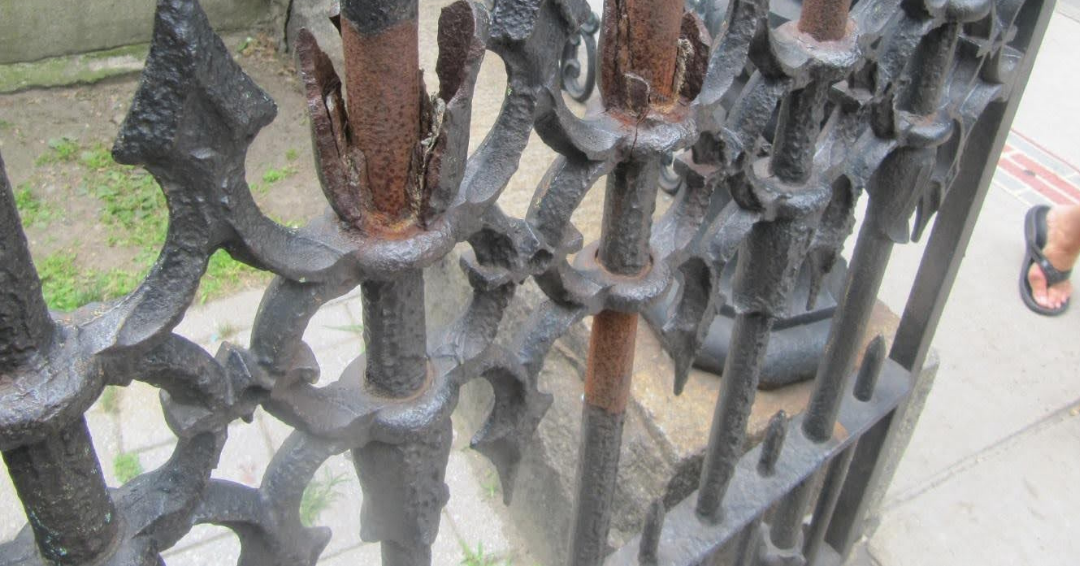Restoration Complete At King's Chapel Burying Ground
With the help of the Freedom Trail Foundation, the Historic Burying Grounds Initiative has completed a restoration of the cast iron fence along Tremont Street at King’s Chapel Burying Ground.
The front fence at this very historic site was installed in 1854. A stone wall was removed to allow the placement of the cast iron fence. The fence was paid for by private donations. At this time, ornate cast iron fencing was in fashion and many such fences were erected at Boston’s historic burying grounds.
We received a $7,500 grant from the Freedom Trail Foundation Preservation Fund to help restore this fence. The total cost of the project was $35,808.00. The scope of work included the replacement of missing fence parts, straightening of fence post caps, removal of all rust, and priming and repainting the fence with special paint.
Although generally a very hearty material, cast iron needs to be maintained regularly to extend its life. Three problems affect the fence at King’s Chapel burying Ground: rust, broken fence elements, and missing fence elements. Rust is caused by exposure to the air and can eat away at the iron, eventually deteriorating it so far as to render it useless. The first-line defense again rust is to maintain a properly painted fence. The cause of the next two items is usually an accident when something hits the fence or vandalism.
Here are some before and after photos:
The choice of paint used in restoration of cast iron is important and depends upon the method of application. For this project, the fence was repainted on site. Removing a historic fence to be cleaned and painted in a shop provides the highest quality paint job but is significantly more expensive and can have risks for the cast iron and supporting masonry. When done by skilled technicians, cleaning and painting on site can also provide an excellent, long lasting coating. A glossy paint was chosen since it tends to be longer lasting than a semi-gloss paint.
We are excited that this fence looks so beautiful now! We are grateful to the Freedom Trail Foundation Preservation Fund for their continued support of the historic burying grounds!







